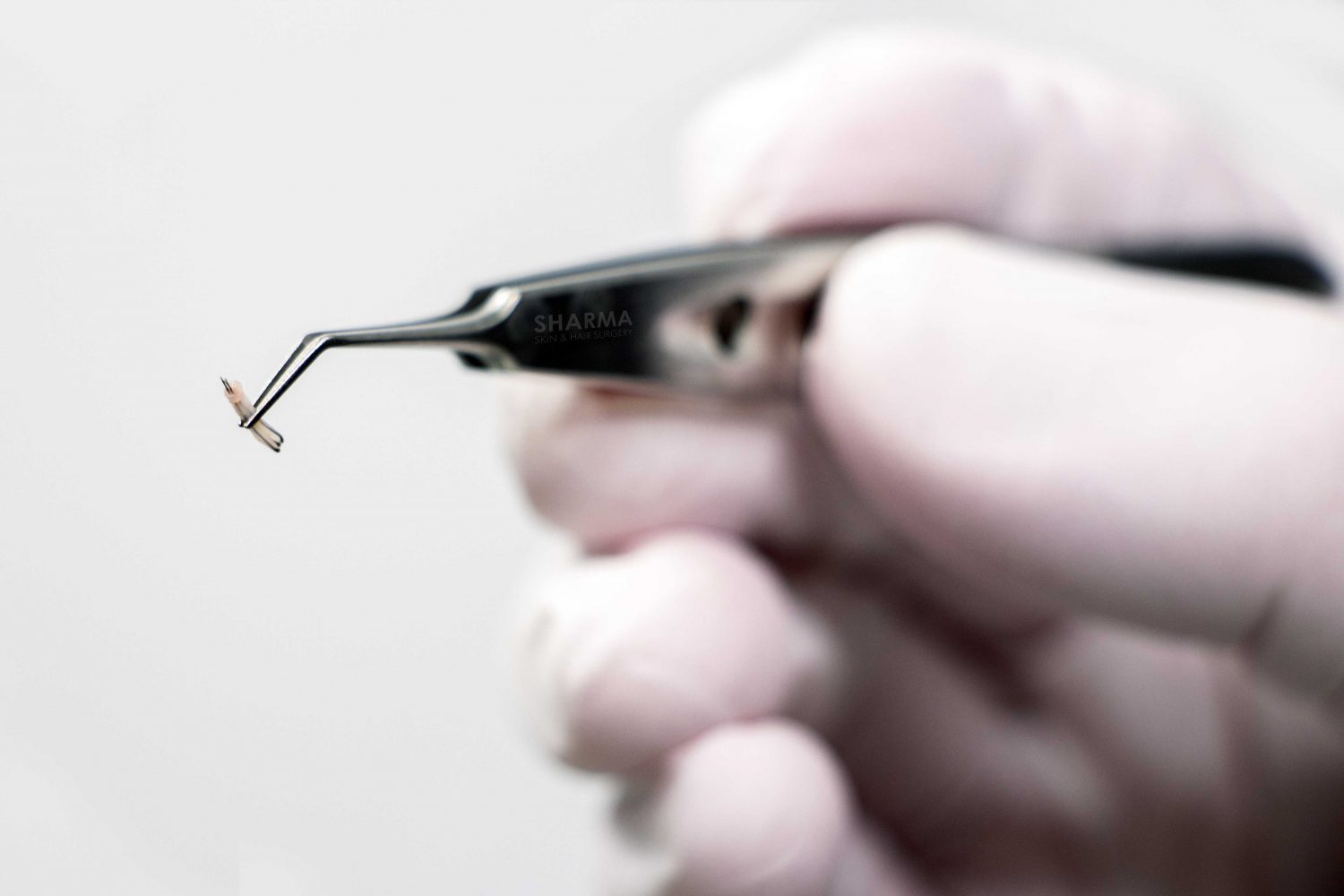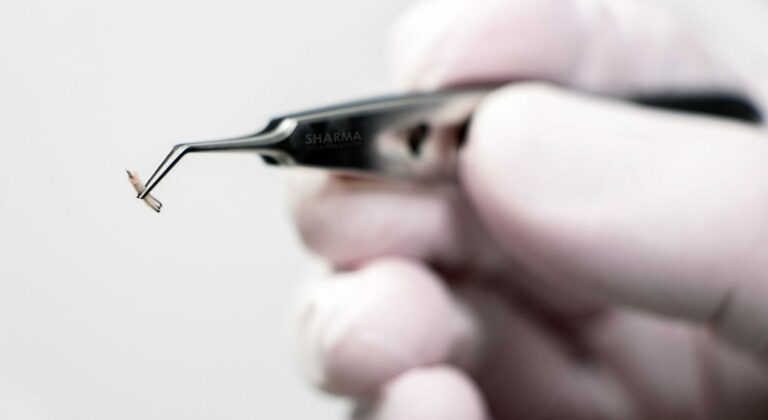Hair transplantation has become an increasingly popular solution for those seeking to restore their hair. However, the industry has seen a disturbing trend: a focus on large graft numbers transplanted in one hair transplant, often promoted as a sign of superior treatment.
While a high graft count may seem impressive, it’s important to understand that quality and strategic planning are far more crucial to achieving optimal results. As a hair restoration physician with extensive experience, I’ve witnessed firsthand how this marketing tactic can mislead patients and compromise their long-term satisfaction.
This article will examine the complexities of hair transplantation, exploring the key factors that truly influence successful outcomes and challenging the common misconception that more grafts always equate to better results.
What is a graft?
A hair graft is a small piece of skin containing hair follicles that is transplanted from one area of the body (usually the back of the head) to a balding or thinning area. These grafts are the building blocks of hair transplant surgery.
There are two main types of hair grafts:
- Follicular Unit Transplant (FUT): A strip of skin is removed from the donor area and divided into individual grafts, each containing 1-4 hairs.
- Follicular Unit Extraction (FUE): Individual hair follicles are extracted directly from the donor area using a specialized tool.
The transplanted hair follicles will continue to grow hair in their new location.
Read more: Hair grafts explained
Understanding hair transplant graft numbers
It’s crucial to understand that more grafts don’t necessarily equate to better results. The quality of the grafts, the skill of the surgeon, and the overall health of the scalp play significant roles in the final outcome.
The number of grafts needed varies widely depending on the extent of hair loss and the desired density. A skilled surgeon will assess your specific needs and recommend the optimal number of grafts. It’s important to remember that the goal is to achieve a natural-looking result, not simply to maximize the number of grafts.
The donor area
The conversation about graft numbers starts with understanding the donor area. The back and sides of your scalp have a limited number of hair follicles suitable for transplantation. These are precious resources that, once used, cannot be replenished. It’s crucial to manage your donor area wisely, considering not only your current needs but also potential future procedures.
When clinics advertise large graft numbers during initial consultations, they often overlook several critical factors:
- Donor supply: Every patient’s donor area is unique in terms of density, quality, and total available grafts. A proper in-person assessment is essential to determine how many grafts can be safely harvested without compromising the donor area’s appearance or future options.
- Graft placement timing: Hair follicles have a limited survival time outside the body. Minimizing this out-of-body time is crucial. Attempting to transplant a large number of grafts in a single session can extend the procedure, potentially affecting graft survival.
- Long-term hair loss management: Hair loss is often progressive. It’s essential to consider your age, family history, and the likely progression of your condition to determine the optimal number of grafts for both present and future needs.
- The role of medical management: Medical treatments like finasteride can help maintain existing hair and slow down hair loss. Incorporating medical management into your hair restoration plan can enhance long-term results.
Quality over quantity
When considering hair transplantation, it’s essential to prioritize quality over quantity. Larger graft numbers can make it challenging to maintain quality control during extraction, preservation, and placement. A focus on precision and care can lead to superior outcomes.
For patients considering hair transplantation, I encourage you to:
- Ask detailed questions about the procedure, including who will be involved and the measures taken to ensure graft survival.
- Consider your long-term goals and discuss how the clinic plans to help you maintain your results.
- Prioritize quality over quantity and seek a comprehensive approach to hair restoration.
By understanding these factors and making informed decisions, you can maximize the benefits of hair transplantation and achieve long-lasting, natural-looking results.
Our approach to graft number determination
In our practice, we take a comprehensive approach to determining graft numbers. We consider factors such as:
- Donor area assessment: evaluating current and future needs
- Scalp laxity, donor density, and hair characteristics
- Pattern of hair loss
- Patient’s age and likely progression of hair loss
This information helps us develop a sustainable long-term plan, which may involve multiple smaller sessions rather than one large procedure. While this approach may not sound as impressive, it often leads to better long-term results.
BOOK NOW
Talk to a Hair Transplant Expert
Are you looking for the most effective treatment plan to reverse the effects of hair loss? Dr. Sharma has a long-lasting commitment to offering the best services in the industry. Not only is he experienced with hair loss treatment, but he is passionate about helping each patient receive excellent results.

Share this:
Medically reviewed by
Updated on
Have a question?
Find out how we can help you look feel your absolute best
Contact us 780-476-7970


